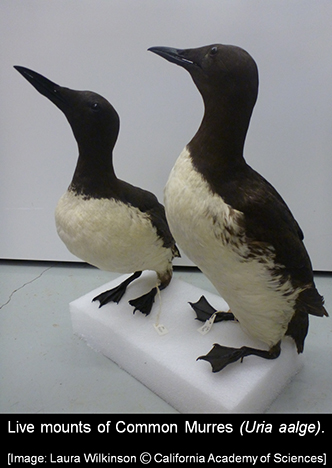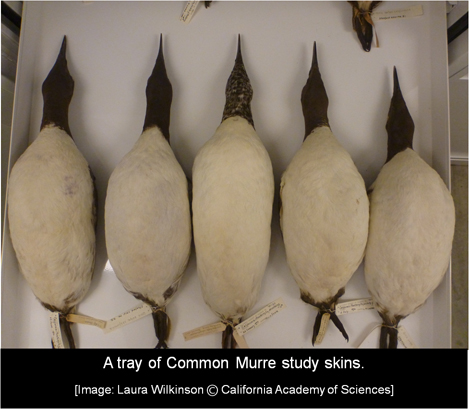A very common question I get when interacting with guests here at the Academy is whether I am a taxidermist. I suppose that in a way, I am, but I consider myself a study skin preparator rather than a taxidermist.
So, what’s the difference? Well, see for yourself!


Traditionally, taxidermists create “live mounts” – mounted specimens that are posed to look as though they are still alive. They’re posed in life-like ways and have realistic glass eyes. Study skins, on the other hand, aren’t posed in a way that you would find in nature – they are flat and compact, which is typical for specimens in a museum collection. While they may not seem as interesting to look at, study skins are essential to our research collection. These specimens take up much less space than live mounts and are prepared in a standardized way among museums, so it’s much easier for researchers to come through and look at a series of a species. Imagine trying to look at a feature of an animal if they’re all posed in different ways!
So, why do we have so many study skins in our collection? The average visitor might find it strange that we have thousands of bird and mammal skins, but it’s not strange at all. Here at the Academy, we’re a library that houses collections of life rather than books. These study skins are essential for bird and mammal researchers to use for their studies. They may be doing a comparative study about plumage differences in birds, or might take small samples from each skin in order to analyze DNA.
While I have yet to begin preparing live mounts, I love making study skins. The fact that they’ll be a part of the collection for hundreds of years and may help answer scientific questions in the future is very exciting to me. They may not look like they’re still alive, but these study skins have a life of their own in scientific research.
Laura Wilkinson
Curatorial Assistant and Specimen Preparator
Ornithology & Mammalogy